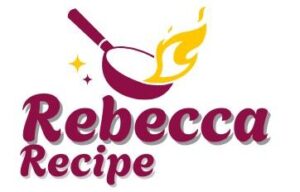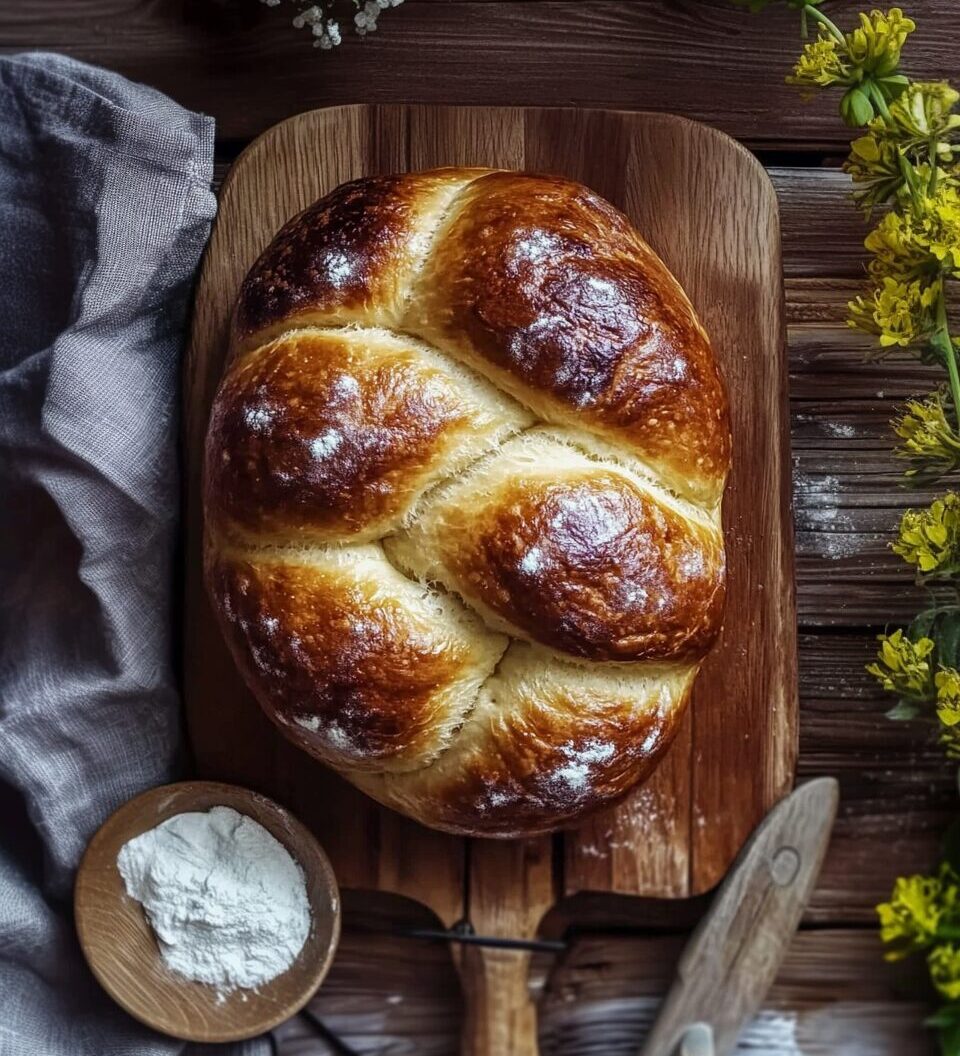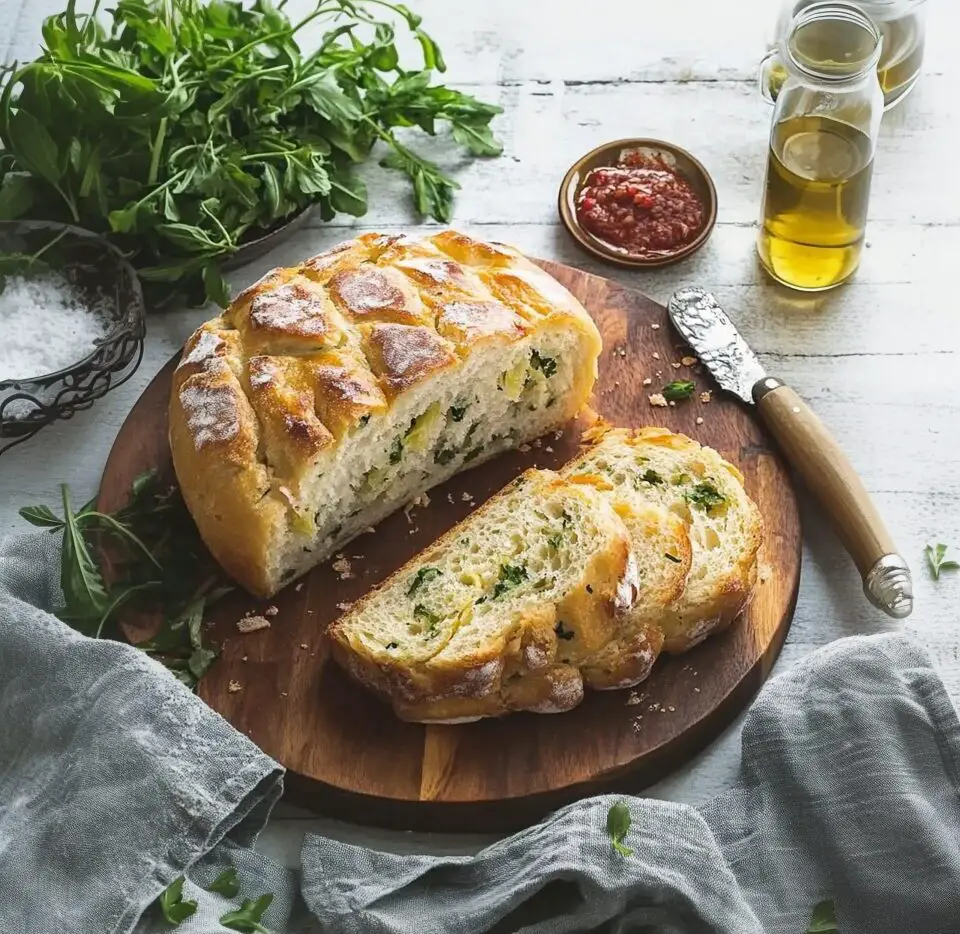Pane di Pasqua, or Italian Easter Bread, is a cherished tradition in Italian households during the Easter season. This sweet, braided bread boasts a soft, fluffy texture and a subtle sweetness, making it a delightful centerpiece for festive gatherings. What sets this recipe apart is the incorporation of mashed russet potatoes and vegetable oil, resulting in an exceptionally tender crumb. Often adorned with colored eggs nestled within its braids, this bread not only pleases the palate but also adds a touch of visual splendor to the Easter table.
Full Recipe:
Ingredients
- 8 grams active dry yeast (2¼ teaspoons)
- 1 cup lukewarm milk
- 1 tablespoon granulated sugar
- 1 cup granulated sugar
- Zest of one orange
- 5 large eggs, room temperature
- ½ cup vegetable oil
- 1 teaspoon pure vanilla extract
- 1½ cups riced russet potatoes (about 225 grams)
- 1000 grams all-purpose flour (about 7 cups), sifted
- 1 egg (for egg wash)
- 1 tablespoon milk (for egg wash)
Directions
- Prepare the Yeast Mixture: In a small bowl, combine the lukewarm milk, 1 tablespoon of sugar, and active dry yeast. Stir gently and let it sit for about 10-15 minutes until frothy.
- Make Orange Sugar: In another bowl, mix 1 cup of granulated sugar with the zest of one orange. Rub them together using your fingertips to infuse the sugar with the orange oils.
- Assemble the Dough: In the bowl of a stand mixer, whisk the 5 eggs on medium speed until frothy, about 3-4 minutes. Gradually add the orange sugar and continue whisking for another 3-4 minutes. Add the vegetable oil and vanilla extract, mixing on low speed until combined.
- Combine Yeast and Potatoes: In a separate bowl, mix the riced potatoes with the yeast mixture to create a slurry. Slowly add this to the egg mixture in the stand mixer, mixing on low speed for about a minute.
- Incorporate Flour: Gradually add the sifted flour to the wet ingredients, mixing until a soft dough forms. Knead the dough until it becomes smooth and elastic.
- First Rise: Place the dough in a greased bowl, cover it with a clean towel, and let it rise in a warm place for about 1 hour, or until doubled in size.
- Rest and Shape: After the first rise, deflate the dough and let it rest for 30 minutes. Divide the dough into three equal parts. Shape each part into a braid or your desired form.
- Second Rise: Place the shaped loaves on a baking sheet lined with parchment paper. Cover and let them rise for another hour, or until nearly doubled in size.
- Prepare Egg Wash: In a small bowl, beat 1 egg with 1 tablespoon of milk. Brush this mixture over the risen loaves to give them a glossy finish.
- Bake: Preheat the oven to 350°F (175°C). Bake the loaves for 45-50 minutes, or until they achieve a deep golden brown color.
- Cool: Remove the loaves from the oven and let them cool on a wire rack before serving.
Nutritional Facts (Per Serving, Approximate)
- Calories: 851
- Total Fat: 20g
- Saturated Fat: 3g
- Cholesterol: 100mg
- Sodium: 150mg
- Total Carbohydrates: 150g
- Dietary Fiber: 3g
- Sugars: 25g
- Protein: 15g
The History and Tradition Behind Pane di Pasqua
Pane di Pasqua has deep roots in Italy’s culinary history, especially during the Easter period. In many parts of Italy, bread holds significant importance as a symbol of sustenance, community, and prosperity. The tradition of making Easter bread dates back centuries, with roots in pre-Christian rituals where bread was often baked to celebrate the changing of seasons and the renewal of life.
In the Christian context, Pane di Pasqua became associated with Easter celebrations, symbolizing the resurrection of Christ. The bread is typically made in the shape of a braided loaf, which represents the unity of the Holy Trinity. In some regions, colored eggs are nestled within the dough, a practice that symbolizes the resurrection, fertility, and the beginning of new life. In addition, the use of sweet dough in this bread signifies the joy and celebration that comes with Easter, making it a perfect food to share with family and friends during the holiday.
The Ingredients: A Fusion of Simple and Rich Elements
The ingredients used in Pane di Pasqua reflect the simplicity of traditional Italian cooking, while also incorporating rich flavors that elevate the bread to a celebratory level. The combination of all-purpose flour, sugar, eggs, milk, and butter creates a soft, slightly sweet dough that is perfect for shaping into the intricate braids or rounds that define this Easter bread.
The addition of mashed russet potatoes is a key element that sets this bread apart from other traditional sweet breads. The potatoes contribute to the bread’s exceptional tenderness and moisture, giving it a texture that is both light and fluffy. The oil also plays an important role in achieving the soft crumb, while the eggs provide richness and color to the dough.
The Process of Making Pane di Pasqua
Making Pane di Pasqua requires a bit of patience and care, but the results are well worth the effort. The dough is prepared by mixing the ingredients in a specific order to ensure the right texture and rise. One of the key steps in making this bread is the yeast activation process, which gives the dough its light, airy texture. The yeast is combined with warm milk and sugar, allowing it to bloom and activate, which helps the dough rise properly.
After the dough has risen, it is divided and shaped into braids or loaves. This step requires a little skill and creativity, as the traditional braid shape not only holds the symbolism of the Holy Trinity but also creates a visually striking bread. The dough is left to rise again before being brushed with an egg wash, which gives it its beautiful golden color when baked.
Cultural Significance and Symbolism of Pane di Pasqua
In Italy, food is never just about sustenance; it carries deep cultural significance, and Pane di Pasqua is no exception. The bread’s round or braided shape symbolizes the continuity of life, a cycle of birth, death, and resurrection. In the Christian tradition, it represents the unity of the Father, Son, and Holy Spirit, with the braided dough mirroring the three distinct persons of the Holy Trinity.
The eggs, which are often placed in the center of the braids or on top of the loaves, are the most striking feature of Pane di Pasqua. The egg is an ancient symbol of fertility, renewal, and resurrection. In many cultures, eggs are associated with the spring season and the idea of new life emerging from the shell. In the context of Easter, the egg also symbolizes the empty tomb of Christ after the resurrection, reinforcing the theme of rebirth and hope that is central to the holiday.
Serving Suggestions for Pane di Pasqua
Pane di Pasqua can be served in many ways, making it a versatile bread that can be enjoyed throughout the Easter season. Traditionally, it is served as part of the Easter breakfast or brunch, often alongside other Italian specialties like ricotta-filled pastries or freshly brewed coffee.
This bread is delicious on its own, but it also pairs beautifully with spreads like honey, marmalade, or a dollop of whipped cream. For a savory twist, some people serve it with Italian cured meats, cheeses, or olives. The sweet and slightly citrusy flavor of the bread complements a wide range of accompaniments, making it an excellent addition to any Easter meal.
Variations of Pane di Pasqua
While the classic version of Pane di Pasqua remains a beloved favorite, there are numerous variations of the bread that can be made depending on personal preferences or regional traditions. Some bakers might choose to add different spices, such as cinnamon or nutmeg, to the dough for added warmth and depth of flavor. Others may experiment with different fillings, like almond paste or chocolate, to create a more indulgent version of the bread.
Health Considerations and Nutritional Information
While Pane di Pasqua is a treat that’s meant to be enjoyed in moderation, it does provide some nutritional benefits thanks to its key ingredients. The bread is rich in carbohydrates, which provide energy, and the eggs in the dough contribute protein, which is essential for the body’s growth and repair. Additionally, the potatoes in the dough offer a source of dietary fiber, as well as vitamins and minerals like vitamin C and potassium.
Conclusion
Pane di Pasqua is more than just a bread; it’s a representation of Italian culture, tradition, and the joy of the Easter season. Its rich history, symbolic meaning, and delightful flavor make it a perfect choice for celebrating the resurrection of Christ and sharing with family and friends. Whether enjoyed as part of a holiday meal or savored as a sweet treat throughout the day, this traditional Italian Easter bread continues to be a beloved dish that carries with it a sense of connection, renewal, and joy.








